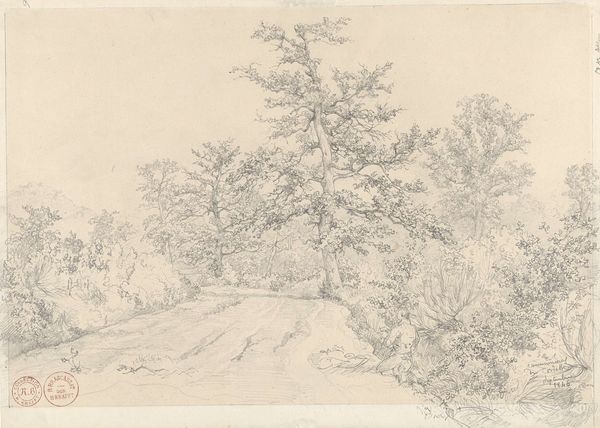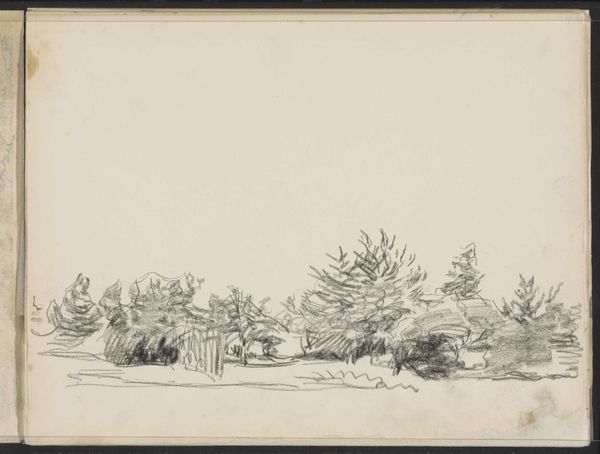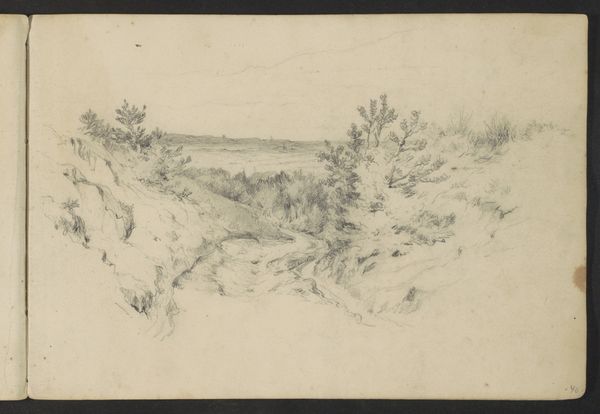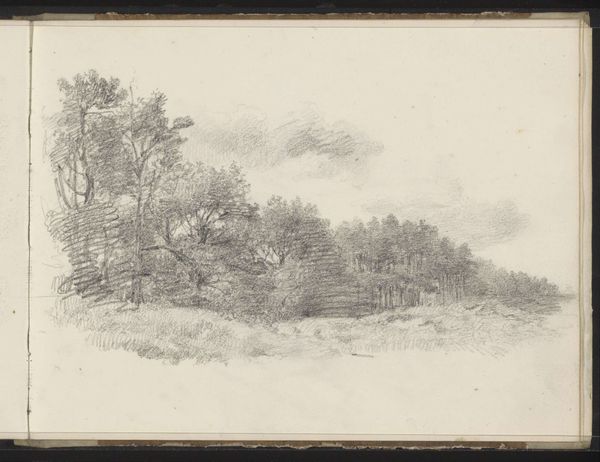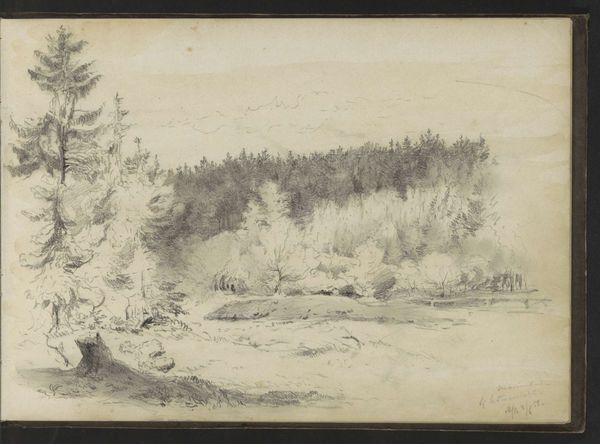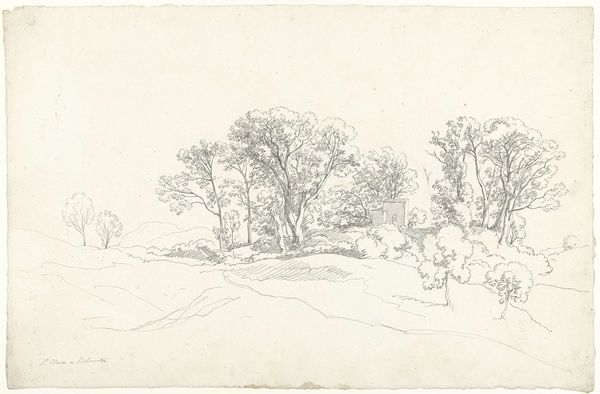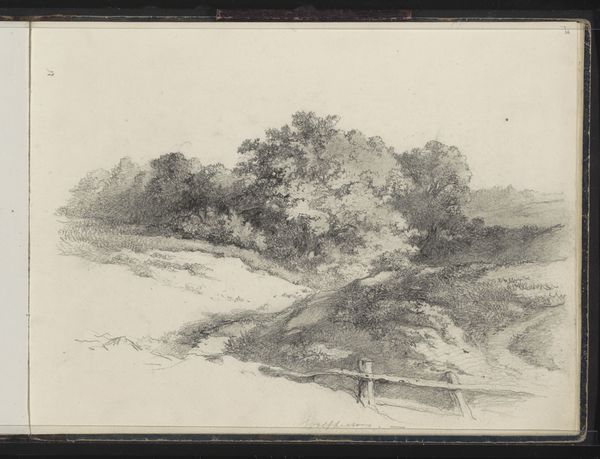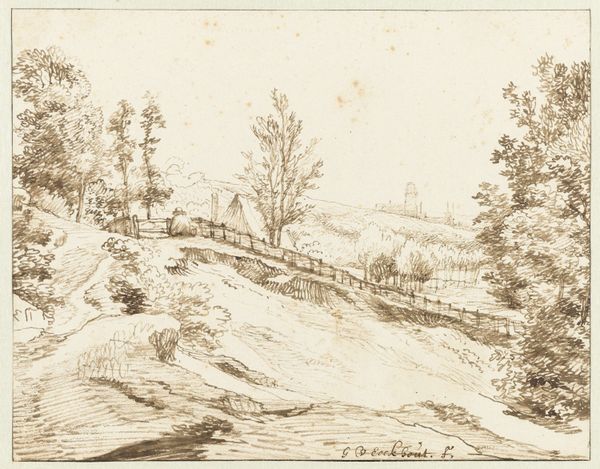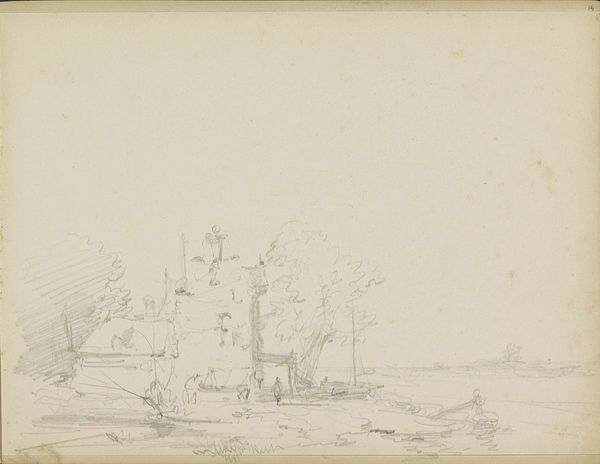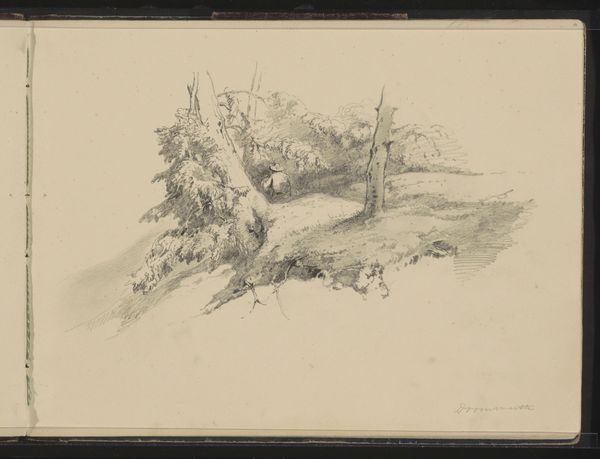
Copyright: Rijks Museum: Open Domain
Curator: Here we have “Landweg met bomen,” or "Country Road with Trees," a pencil and graphite drawing on paper by Johannes Tavenraat, created sometime between 1842 and 1868. Editor: Mmm, it’s so gentle, almost wistful. The light seems to diffuse everything, softening the forms of the trees and that intriguing gate structure in the road. I'm immediately drawn into the tranquility of the scene. Curator: Note the strategic use of line and shading to articulate form. The textures, particularly in the foliage, show the artist’s mastery of graphite. Semiotically, the road can be seen as a symbol of transition, or the passage of time. The repetition of the road tracks indicates to movement towards that passage of time. Editor: Time definitely feels key here! The trees aren't idealized, but rendered with an almost aching realism that really underscores that transience you mentioned. I wonder if Tavenraat spent much time here—maybe reflecting on his own path, so to speak? There’s almost an autobiography to the piece! Curator: It’s tempting to infer biographical meaning, certainly. However, within the historical context of Romanticism, landscape often serves as a vehicle for broader emotional or spiritual reflection. One could read this not as a purely personal narrative but as part of that visual discourse of feeling. Editor: You're right; I suppose the scale feels too grand for such an autobiographical intention. The artist really did take in a gorgeous vantage. Curator: But your initial reaction points to how deftly Tavenraat invites our engagement. Editor: Yeah, I felt welcomed. What a neat little scene. Curator: It serves as a compelling exercise in the formal possibilities of the landscape genre. Editor: Exactly—to being quiet, breathing deep. Who knew a road could do so much?
Comments
No comments
Be the first to comment and join the conversation on the ultimate creative platform.
